Top 10 Nuts and Seeds Highest in Fiber

Nuts and seeds are renowned for their heart-healthy benefits, due in large part to the fiber found in nuts. (1)
Nuts and seeds high in fiber include chia seeds, flax seeds, squash seeds, pumpkin seeds, dried coconut, sesame seeds, sunflower seeds, almonds, pine nuts, pistachios, and chestnuts. The daily value (DV) for fiber is 28g per day (2), and a one-ounce portion of high fiber nuts or seeds provide between 5 and 35% of that daily value. A one-ounce portion of nuts or seeds is roughly equal to a handful.
Chia and flax seeds have the added benefit of being high in heart-healthy omega 3 fatty acids. Almonds, walnuts, and pistachios have been shown to lower cholesterol.
Any of the fiber-rich nuts and seeds listed below are a great addition to a healthy diet, with 1-2 ounces of nuts or seeds being a good daily portion size.
Below are the top 10 nuts and seeds highest in fiber. For more see the extended list of over 40 nuts and seeds high in fiber.
List of Nuts and Seeds High in Fiber
 1 Chia Seeds
1 Chia Seeds| Fiber per oz(~2 Tblsp) | Fiber per 100g | Fiber per 200 Calories |
|---|---|---|
| 10g (35% DV) | 34g (123% DV) | 14g (51% DV) |
Chia seeds are also high in Omega 3 Fatty Acids.
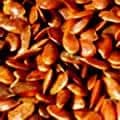 2 Flax Seeds
2 Flax Seeds| Fiber per Oz | Fiber per 100g | Fiber per 200 Calories |
|---|---|---|
| 8g (28% DV) | 27g (98% DV) | 10g (37% DV) |
Flax seeds are also high in Omega 3 Fatty Acids.
 3 Squash and Pumpkin Seeds
3 Squash and Pumpkin Seeds| Fiber per 1 Oz Handful | Fiber per 100g | Fiber per 200 Calories |
|---|---|---|
| 5g (19% DV) | 18g (66% DV) | 8g (29% DV) |
Squash and pumpkin seeds are also very high in protein.
 4 Dried Coconut
4 Dried Coconut| Fiber per Oz | Fiber per 100g | Fiber per 200 Calories |
|---|---|---|
| 5g (17% DV) | 16g (58% DV) | 5g (18% DV) |
 5 Sesame Seeds
5 Sesame Seeds| Fiber per Oz | Fiber per 100g | Fiber per 200 Calories |
|---|---|---|
| 4g (14% DV) | 14g (50% DV) | 5g (18% DV) |
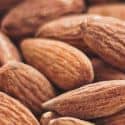 6 Almonds
6 Almonds| Fiber per 1oz Handful | Fiber per 100g | Fiber per 200 Calories |
|---|---|---|
| 4g (13% DV) | 13g (45% DV) | 4g (15% DV) |
 7 Pine Nuts
7 Pine Nuts| Fiber per 1 Oz Handful | Fiber per 100g | Fiber per 200 Calories |
|---|---|---|
| 3g (11% DV) | 11g (38% DV) | 3g (12% DV) |
 8 Pistachios
8 Pistachios| Fiber per 1 Oz Handful | Fiber per 100g | Fiber per 200 Calories |
|---|---|---|
| 3g (11% DV) | 11g (38% DV) | 4g (14% DV) |
Pistachios are also very high in potassium.
 9 Hazelnuts
9 Hazelnuts| Fiber per 1 Oz Handful | Fiber per 100g | Fiber per 200 Calories |
|---|---|---|
| 3g (10% DV) | 10g (35% DV) | 3g (11% DV) |
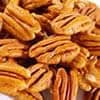 10 Pecans
10 Pecans| Fiber per Oz | Fiber per 100g | Fiber per 200 Calories |
|---|---|---|
| 3g (10% DV) | 10g (34% DV) | 3g (10% DV) |
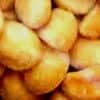 11 Macadamia Nuts
11 Macadamia Nuts| Fiber per 1 Oz Handful | Fiber per 100g | Fiber per 200 Calories |
|---|---|---|
| 2g (9% DV) | 9g (31% DV) | 2g (9% DV) |
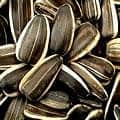 12 Sunflower Seeds
12 Sunflower Seeds| Fiber per 1 Oz Handful | Fiber per 100g | Fiber per 200 Calories |
|---|---|---|
| 2g (9% DV) | 9g (31% DV) | 3g (11% DV) |
Sunflower seeds are very high in Vitamin E.
 13 Peanuts (Dry Roasted)
13 Peanuts (Dry Roasted)| Fiber per Oz | Fiber per 100g | Fiber per 200 Calories |
|---|---|---|
| 2g (9% DV) | 8g (30% DV) | 3g (10% DV) |
 14 Brazil Nuts
14 Brazil Nuts| Fiber per 1 Oz Handful | Fiber per 100g | Fiber per 200 Calories |
|---|---|---|
| 2g (8% DV) | 8g (27% DV) | 2g (8% DV) |
Brazil nuts are very high in selenium.
 15 Chestnuts
15 Chestnuts| Fiber per oz(~3 Chestnuts) | Fiber per 100g | Fiber per 200 Calories |
|---|---|---|
| 1g (5% DV) | 5g (18% DV) | 4g (15% DV) |
How much fiber do you need each day?
The daily value (DV) for fiber is 28 grams per day. (2) This is the amount shown on food labels to help the average person compare the health benefits of different foods. However, for many people, this amount is actually too low.
The adequate intake (AI) is a more accurate daily target, and varies by age and gender. The AI for fiber is up to 38 grams per day. (3) We've included the specific values below for various groups below, so you can determine what your personal target should be.
The average American consumes far less than the DV for fiber, let alone the AI for their demographic group. (4)
Here is the breakout of the adequate intake by age and gender for fiber: (3)
| Life Stage | RDA |
|---|---|
| Children | |
| 1-3 years old | 19g |
| 4-8 years old | 25g |
| Males | |
| 9-13 years old | 31g |
| 14-50 years old | 38g |
| 50+ years old | 30g |
| Females | |
| 9-18 years old | 26g |
| 19-50 years old | 25g |
| 50+ years old | 21g |
| Pregnancy | |
| 14-50 years old | 29g |
| Lactation | |
| 14-50 years old | 29g |
About the Data
Data for the curated food lists comes from the USDA Food Data Central Repository.
You can check our data against the USDA by clicking the (Source) link at the bottom of each food listing.
Note: When checking data please be sure the serving sizes are the same. In the rare case you find any difference, please contact us and we will fix it right away.
About Nutrient Targets
Setting targets can provide a guide to healthy eating.
Some of the most popular targets include:- Daily Value (%DV) - The daily value (%DV) is a general guideline for consumption that will prevent deficiency of a particular nutrient in most people. The %DV refers to the percentage of an amount that's found in a single serving of a food. It also accounts for absorption factors. It is set by the U.S. FDA.
- Recommended Dietary Allowance (%RDA) - The RDA sets an average daily dietary intake level that is sufficient to meet the nutrient requirements of nearly all (97.5%) healthy individuals. It's more specific than the daily value, and varies by age and gender. The RDA is set by the US National Instutites of Health.
- Reference Dietary Intake (%RDI) -The reference dietary intake is similar to the recommended daily allowance, but is specific to age and gender. The RDI for amino acids is set by the U.N. World Health Organization.
- Adequate Intake (%AI) - This value is primarily used in reference to omega-3 and omega-6 fats. The Adequate Intake is set by the U.S. Institute of Medicine. Because there is less evidence to determine the ideal targets for consumption of these nutrients, the specific amount is considered to be less reliable. Using the term Adequate Intake, rather than one of the other terms, helps to emphasize that the ideal intake of that particular nutrient has not yet been scientifically determined.
See the Guide to Recommended Daily Intakes for more information.
Want to set your own targets? Sign up for an account and set custom targets in the daily meal planner.From the Nutrient Ranking Tool
Use the ranking tool links below to select foods and create your own food list to share or print.
- Foods High in Fiber
- Foods Low in Fiber
- Vegetables High in Fiber
- Fruits High in Fiber
- Vegetarian Foods High in Fiber
- Nuts High in Fiber
- Grains High in Fiber
- Beans High in Fiber
- Breakfast Cereals High in Fiber
- Fast Foods High in Fiber
View more nutrients with the nutrient ranking tool, or see ratios with the nutrient ratio tool.
Related
Data Sources and References
- Thomas M. Barber, Stefan Kabisch, Andreas F. H. Pfeiffer and Martin O. Weickert The Health Benefits of Dietary Fibre Nutrients. 2020 Oct; 12(10): 3209.
- FDA on Daily Values
- Institute of Medicine Dietary Reference Intakes
- Diane Quagliani, MBA, RDN, LDN and Patricia Felt-Gunderson, MS, RDN, LDN Closing America’s Fiber Intake Gap Am J Lifestyle Med. 2017 Jan-Feb; 11(1): 80–85. Published online 2016 Jul 7. doi: 10.1177/1559827615588079
- U.S. Agricultural Research Service Food Data Central
Try the recipe nutrition calculator, or daily meal planner.
Create a free account to log and track foods.

